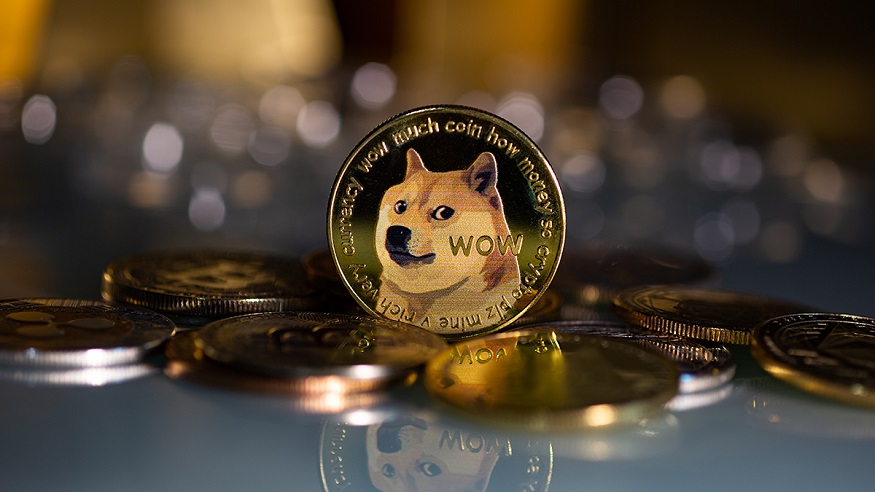What is Dogecoin (DOGE)?
Dogecoin (DOGE) traces its roots back to a beloved internet meme called “Doge,” featuring a comical depiction of a Shiba Inu dog alongside whimsical text in Comic Sans font. Launched in 2013, Dogecoin’s network stems from a fork of Litecoin, itself derived from the foundational code of Bitcoin. Despite its initial conception as a satirical response to the surge of alternative cryptocurrencies emerging after Bitcoin’s debut, DOGE has surpassed expectations with its remarkable growth, cultivating an active ecosystem and showcasing the market value of internet culture within the digital economy. Consequently, DOGE has played a pivotal role in propelling the popularity of memecoins within the realm of cryptocurrency.
How does Dogecoin work?
Similar to numerous other cryptocurrencies, DOGE operates on its independent blockchain. This digital ledger continually updates with all newly conducted transactions, with the network leveraging cryptography to ensure the security of these transactions.
Employing a proof-of-work consensus mechanism, the DOGE blockchain relies on miners who utilize computational power to solve intricate mathematical equations. This process facilitates transaction processing and records them on the blockchain. In return for their contribution to maintaining the blockchain, miners receive additional DOGE, which they can opt to hold or trade on the open market.
Although Dogecoin (DOGE) is usable for transactions and purchases, it doesn’t serve as an efficient store of value. Primarily, this limitation stems from the absence of a lifetime cap on the total supply of DOGEs attainable through mining, rendering the cryptocurrency highly inflationary by design.
The blockchain incentivizes miners through the generation of millions of new Dogecoins daily, posing a significant challenge for sustaining speculative price gains in Dogecoin over extended periods.
How to Buy Dogecoin
You can purchase Dogecoin through various cryptocurrency exchanges such as Binance or Kraken. These exchanges typically require you to create and fund an account using either U.S. dollars or other cryptocurrencies. Once your account is set up, you can proceed to buy and exchange cryptocurrencies, including Dogecoin.
Furthermore, certain online brokers like Robinhood and TradeStation offer the option to buy Dogecoin, alongside traditional assets such as stocks, mutual funds, and bonds. While these brokers may not provide as wide a selection of cryptocurrencies as exchanges, Dogecoin is generally available on their platforms.
After acquiring Dogecoin or any other cryptocurrency, it’s advisable to transfer your coins to a cryptocurrency wallet. Wallets come in various forms, ranging from online services offered by exchanges like Coinbase to mobile apps or even physical hard drives. These wallets are secured with a private password, providing an additional layer of protection against potential hacks since your coins are held outside of an exchange.
Prior to DOGE gaining widespread popularity and experiencing significant price surges, individuals could earn free coins by completing simple online tasks.
“For many years, individuals could earn DOGE by performing tasks on DOGE ‘faucets’ instead of purchasing it,” noted C. Neil Gray, a partner specializing in fintech at Duane Morris LLP. “These tasks included activities like watching advertisements or participating in surveys. However, in recent times, finding functional faucets has become increasingly challenging.”
The future of Dogecoin(DOGE)
As expected, the success of Dogecoin has sparked the emergence of similar ventures. Various “meme coins,” such as Pepe (PEPE), Shiba Inu Coin (SHIB), and Bonk (BONK), have arisen in its wake.
In August 2021, the Dogecoin (DOGE) Foundation was reinstated, with notable figures on its advisory board, including Ethereum co-founder Vitalik Buterin, Dogecoin co-founder Billy Markus, Dogecoin core developer Max Keller, and Neuralink CEO Jared Birchall.
In May 2023, the DRC-20 token standard was introduced, facilitating the creation of “Doginals,” distinct digital assets reminiscent of non-fungible tokens (NFTs) and based on Bitcoin Ordinals. The implementation of this new standard led to a surge in Dogecoin transactions to an all-time high. However, some core developers expressed skepticism regarding the potential of this feature, contending that it “has not undergone sufficient scrutiny.”
While Dogecoin’s developers are focused on the long-term objective of transforming the meme coin into a fully operational everyday currency, many newer meme coins openly admit to adopting a more experimental approach. For instance, SHIB positions itself as “an experiment in decentralized spontaneous community building.”
However, not everyone finds amusement in these endeavors. In June 2020, Thailand’s Securities and Exchange Commission mandated crypto exchanges to remove meme coins (alongside NFTs and social tokens), defining them as tokens lacking “clear objective or substance or underlying value,” and whose valuation is driven by social media trends.
The future of Dogecoin (DOGE) remains uncertain—whether it will persist or suffer a decline similar to its 2018 peak is a matter of speculation. Nonetheless, as the Dogecoin community often emphasizes, one aspect remains constant: 1 DOGE will always equal 1 DOGE.
The Dogecoin (DOGE) community has consistently displayed strong activity and loyalty over the years. Should proponents succeed in their objective of establishing Dogecoin as a legitimate currency for transactions, it has the potential to endure far into the future. Wow.


